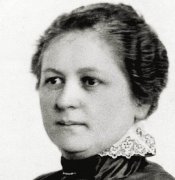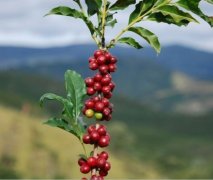Black Coffee Culture Coffee tradition of Ethiopians
Ethiopians still maintain a lot of coffee traditions. They are not used to picking fruit from trees, and more often they collect ripe and fallen fruit from under the coffee tree, which damages the quality of the coffee somewhat. They have always used the traditional sun treatment of coffee beans, rather than water washing-which allows coffee beans to absorb more of the aroma of the flesh, so the fruit flavor is heavier. Nowadays, some of these methods have changed with the development of the coffee industry, but the way they drink coffee still follows the ancient way. The procedure is so complicated that it can take hours to drink a cup of coffee. But this way to make coffee, the room is full of fragrance, so that you get drunk before drinking.

Almost every Ethiopian family drinks home-grown coffee. The coffee is picked, exposed to the sun and slightly fermented. When the coffee fruit dries and hardens, the fruit is crushed by hand and the beans wrapped in parchment are separated. These coffee beans can be stored for a long time at the right temperature and humidity. However, Ethiopians don't let them store for long. They like to drink fresh coffee.

Ethiopians use a special clay pot to make coffee. Before making coffee, the pot is heated with hot coal. When the pottery pot is heated, the hostess first cleans the coffee beans to remove the parchment-like endocarp and silver skin from the surface of the beans. Then, the hostess will add a little rosin to the fire, incense the whole room, then take out an iron pan shaped like a pan, put it on the fire, pour in the washed coffee beans and stir-fry with a shovel. After a few minutes, the coffee beans gradually show a light brown cinnamon color, followed by a crackling sound-usually divided into "one explosion" and "two explosions". Not long after the explosion, the coffee beans turn dark brown. At this time, the coffee beans are poured into a stone mortar, mashed with a pestle and ground into a powder as fine as possible. Grind the coffee powder, pour it into a warm clay pot and add spices such as cardamom and cinnamon, or add a herb called Adam's Health, and bring it to a boil.

Ethiopians drink coffee from small 3-ounce earless cups. After the coffee powder boils for the first time in a pottery pot, the hostess pours the coffee into the cup and adds a spoonful of sugar. The coffee made in this way is very thick, and the coffee grounds are not filtered. Although most of them remain at the bottom of the cup, there is still powder suspended in the coffee. People who are not used to it will inevitably choke their mouths. The coffee in the pottery pot can be boiled two or three times. If the guest is served with coffee, the guest will usually leave after the coffee is boiled for the second time. In addition, Ethiopians like to match coffee with small pancakes with sweet chili peppers.

Important Notice :
前街咖啡 FrontStreet Coffee has moved to new addredd:
FrontStreet Coffee Address: 315,Donghua East Road,GuangZhou
Tel:020 38364473
- Prev

Mrs. Merita, the pioneer of follicular coffee.
When it comes to the popular way of brewing coffee in the world, we should thank Bentz Melitta, a German housewife. She invented the coffee bubble method more than 100 years ago, rewriting the history of coffee drinking in Germany and the world. Born in Dresden in 1873, Bentzmerita is a housewife who likes Schlchen Heeen.
- Next

Knowledge of boutique coffee culture Vietnamese coffee and French coffee culture
I do not know since when, Vietnam has suddenly become the second largest coffee exporter in the world, after Brazil, among which Robusta coffee beans, which make three-in-one instant coffee, are the largest, with an output of as much as 1/4 of the world. World-famous coffee retailers such as Starbucks and Nestl é are all major customers of Vietnamese coffee exports. At present, coffee beans are widely planted in Vietnam.
Related
- How did the Salvadoran coffee industry develop in Central America?
- What exactly does the golden cup extraction of coffee mean?
- The Origin of Coffee flower
- [2023 Starbucks World Earth Day] there are more meaningful things besides free Starbucks coffee!
- What kind of coffee is there in Spain? 9 Flavors of Spanish Coffee
- Aromatic African coffee| Kenya's coffee culture and historical production area
- Liberica Coffee Bean knowledge: the characteristics of Liberian Coffee beans of the three original species of Coffee beans
- The origin and formula of Spanish latte introduces the taste characteristics of Bombon coffee in Valencia, Spain.
- How to adjust the solution of over-extracted coffee
- What is the tasting period of coffee beans? What is the period of coffee and beans? How should coffee wake up and raise beans?

